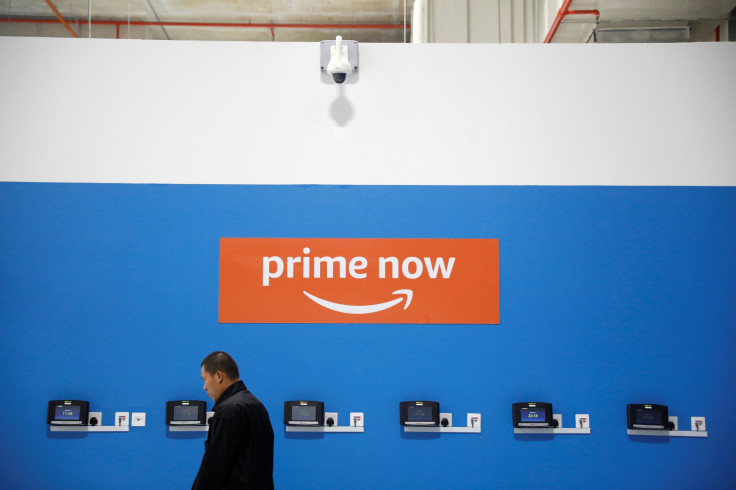A Closer Look At Amazon Prime Video's Performance

Amazon (NASDAQ:AMZN) has been quiet about specific figures behind its Amazon Prime Video service that's available to its paying members. However, now that the e-commerce giant has finally revealed the number of Amazon Prime members worldwide, we have a clearer picture of how its video service is performing.
This article originally appeared in The Motley Fool.
In mid-April, Amazon CEO Jeff Bezos wrote in his annual letter that his company had racked up over 100 million Prime subscribers worldwide. This figure is useful when looking at the leaked numbers behind Amazon Prime Video that Reuters reported on in March. Using these two sources, we can draw some conclusions about how well Amazon Prime Video is performing for the company.
Amazon Prime Video's performance so far
Amazon has long told investors that it views its Prime Video service as just another incentive to get people to sign up for its Prime membership program. That's because Prime members spend more money on Amazon's platform. Amazon is now spending about $5 billion per year on original content and licensing content to encourage people to become Prime members, sources told Reuters.
That explains why Amazon specifically records how many of its Prime members signed up primarily for access to its video service. To do this, Amazon tracks which members start watching a show immediately after signing up for Prime. Between 2014 and 2017, more than five million new subscribers fit that profile, which is an estimated one-fourth of all sign-ups in that three-year period.
When Reuters came out with its report on the leaked internal document on Amazon Prime Video, the publication estimated that Amazon had just 75 million subscribers worldwide, but now we know it actually has over 100 million. And based on the leaked documents, just 26 million U.S. Prime subscribers were actively streaming the video service in early 2017.
This just goes to show that Amazon is not exactly looking to overtake Netflix, which has a stunning $8 billion content budget this year. In early 2017, Netflix had over 50 million U.S. subscribers, or about double Amazon's active U.S. video streamers at the time. Netflix is now up to 125 million subscribers worldwide, which is more than Amazon's total Prime subscribers, many of whom aren't even using the Prime Video service.
Amazon is still mainly known for its convenient online shopping platform and fast two-day shipping for Prime members, while Netflix is exclusively a video-streaming service. That's why many people are probably willing to pay for both a Prime membership and a Netflix membership. They're seen as two separate services rather than offering overlapping services.
Future Prime Video projects that could be hits
While Amazon might not have the viewership Netflix has, it's still impressive that 5 million people signed up for a Prime Membership over a three-year period mainly for access to its growing video library. And that figure should continue to grow as Amazon ups its content spend and continues to sign deals with big-name talent.
Amazon's most anticipated show is a five-season series based on The Lord of the Rings books by J.R.R. Tolkien. Amazon Studios beat out Netflix for the project, which is expected to cost upward of $1 billion, making it the most expensive TV show ever made. The three Lord of the Rings films and three Hobbit films that were all directed by Peter Jackson brought in a total of over $10 billion at the Box Office, so Amazon is likely to attract a wave of Prime subscribers with the release of this expensive take on a beloved series.
As part of the leaked internal documents, Reuters reported that Amazon's The Man in the High Castle had 8 million U.S. viewers in early 2017 and brought in 1.15 million new Prime subscribers across the globe. If that many people signed up for Prime just to watch a previously unheard-of series, you can imagine how many people might sign up for Prime to watch a $1 billion Lord of the Rings series.
The second most-anticipated video series from Amazon is probably one done in partnership with Jordan Peele, the writer and director of the hit "Best Picture" nominee Get Out, which won Peele the Oscar for best original screenplay. On June 5, Amazon announced that Peele had signed a deal that requires him to give Amazon a first look at his ideas for TV series. This comes after Netflix has already signed deals with Shonda Rhimes, Ryan Murphy, and Barack and Michelle Obama.
J.R.R. Tolkien and Jordan Peele both already have huge fan followings, so these upcoming series hold big potential for Amazon's Prime program. Its main issue might be how to entice its members to stay on board even after they watch the program they signed on to watch. That's why companies like Netflix can't relax after producing one or two hit series. Like Netflix, Amazon will have to churn out a continuous stream of hit series, as well as continue offering other Prime perks, such as unbeatable shopping prices, faster shipping, more Whole Foods perks, and more.
John Mackey, CEO of Whole Foods Market, an Amazon subsidiary, is a member of The Motley Fool's board of directors. Natalie Walters has no position in any of the stocks mentioned. The Motley Fool owns shares of and recommends Amazon. The Motley Fool has a disclosure policy.





















